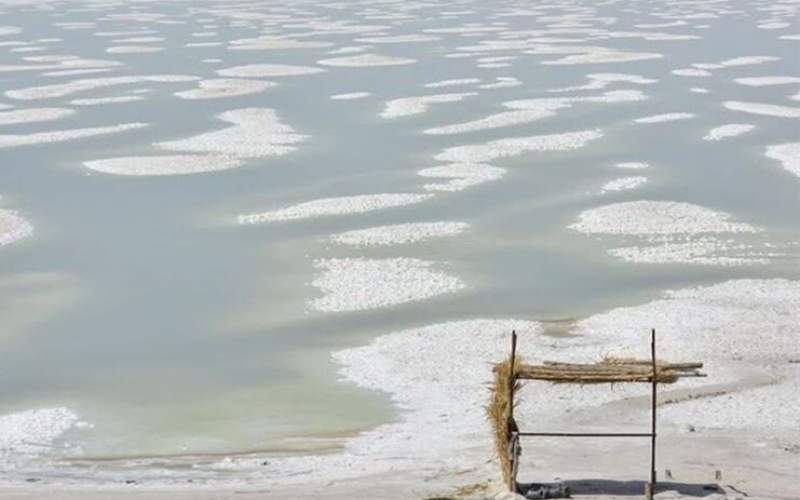The Iran Project
: The current drought and the severe aridity in Lake Urmia have created heat islands that intensify the heat and make the situation of low rainfall even more aggravated.
Saturday 20 January 2024 - 20:29
Story Code : 412675
Source : Tehran Times
Heat islands in Lake Urmia aggravate low rainfall: expert
“During the last two decades, a large number of dams were built on the rivers entering Lake Urmia, and at the same time, the area of agricultural lands near the lake increased by more than 120 percent,” Tasnim quoted Ali Arvahi, an expert on wetland ecosystems management, as saying.
Lake Urmia began shrinking in 1995 due to a combination of prolonged drought, and the extraction of water for farming and dams.
Unfortunately, the lake has transformed into a vast, dry salt flat.
Rainfall down by 40%
The amount of precipitation in the Lake Urmia basin has decreased by 40 percent in the long term.
Despite the meteorological forecasts of above-normal rainfall in the current water year, there has been a 2.4 percent decrease in rainfall compared to last year and a 40 percent decrease in the long term, IRIB quoted Mohammad-Sadeq Motamedian, the governor-general of West Azarbaijan province and the secretary of the national working group for Lake Urmia restoration, as saying.
Referring to the fact that the water level of Lake Urmia has decreased by 14 cm compared to last year, Motamedian added the current area of Lake Urmia is 686 square kilometers, and its water supply has reached 930 million cubic meters from 1.2 billion cubic meters last year.
Heat islands
Heat islands are urbanized areas that experience higher temperatures than outlying areas.
Structures such as buildings, roads, and other infrastructure absorb and re-emit the sun’s heat more than natural landscapes such as forests and water bodies.
Urban areas, where these structures are highly concentrated and greenery is limited, become “islands” of higher temperatures relative to outlying areas.
Heat islands are caused by different factors including reduced natural landscapes in urban areas; urban material properties; urban geometry; heat generated from human activities; and weather and geography.
Climate change
Climate change rather than regional factors is responsible for disrupting rainfall patterns in the country, Darioush Gol-Alizadeh, head of the national center for weather and climate change affiliated with the Department of Environment, said on January 3.
He made the remarks in the first scientific seminar on the role of probable factors in lowering the volume of rainfalls in the country.
“Climate change and air pollution are closely interlinked. Air pollution can lead to an increase in greenhouse gases on a macro level, as in the first half of the year, we are often dealing with sand and dust storms,” he added.
In December 2023, the Department of Environment (DOE) asked its subsidiaries to carry out a detailed study on climate change and its causes due to the decrease in annual precipitation, particularly this year.
Despite the Meteorological Organization’s forecasts that there would be adequate autumn rainfall, the amount of rainfall reported has been very low, IRNA reported.
Ali Salajeqeh, head of DOE, asked the Office for Marine Environment and Wetlands, the National Climate Change Research Center, and the Environmental Research Institute to cooperate and investigate the causes of low rainfall this year.
Reporter : Editorial of The Iran Project
# Tags











